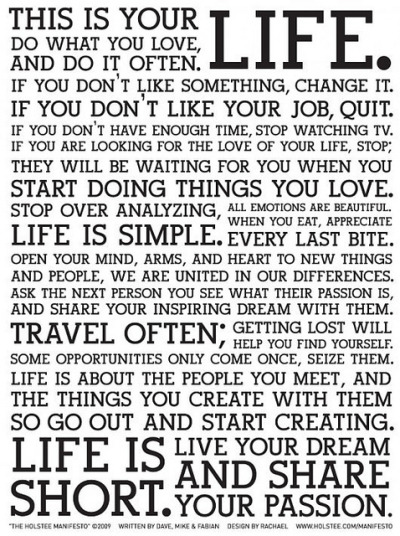Behind the scenes – the moment before & walking onstage. Sold out Nuyorican Poets Cafe.
Author: Carlos Andrés Gómez
People culture resources ideas
The only way I want to live
What’s genocide?”
“What’s genocide?” – remixed by man in Papua New Guinea & 17 year-old girl in Pakistan
I feel conflicted sometimes about all of this ever-growing, ubiquitous social networking/internet culture. For years I resisted Facebook and Twitter and Tumblr (even longer) worried that it created an illusion of closeness or connection while discouraging actual contact with other human beings. I’ve always been a pretty private guy and someone who really values quality time with people IN PERSON. Haha
All of that being said, I’m starting to really come around and value what all of this social media allows us to do. One of the most incredible things for me to see, especially doing a lot of touring/festivals abroad is how many people in far off places can get access to art, culture, and ideas they otherwise never may have come across because of YouTube (or now Tumblr).
Yesterday, a teacher friend of mine forwarded me the link I just posted here. A man in Papua New Guinea adapted my poem “What’s genocide?” – rewriting it to let people know about what is happening right now in his home country in the south Pacific. Reading his powerful remix of my piece gave me a flashback to a few years ago…
I was in Ireland in 2008 performing for a room of high school kids. As I tore through the poem, I noticed multiple sets of lips in the audience mouthing along to the words.
And then it clicked – these sixteen and seventeen year-old kids in this working-class hood in Dublin know my poem – word-for-word. I was so confused at first. Then blown away. And confused again. Just thought, “Wow.” Then, I realized – YouTube. The internet allows us to share ideas and connect in ways we never could have imagined.
A few weeks after that day, I received a message from a 17 year-old girl from Islamabad, Pakistan. I think she messaged me on Facebook or posted it to my website’s message board (which I had at the time) and told me she had adapted my poem to fit the current political context of what was happening in her country. She told me that she had re-written my poem and then performed it at an artist showcase and got a standing ovation.
The room was shocked that a teenager, a young woman could stand up and speak with such conviction and fearlessness.
It’s incredible what she’s done here. I, honestly, can’t get through her version without tears in my eyes. Definitely give it a read and check out her note after the poem where she explains all of her references.
———————————————————————
“Genocide Localised”
(an adaptation of my poem “What’s genocide?” by 17 year-old Palvashay in Islamabad)
Their high school principal told me,
I couldn’t teach poetry with profanity.
So I asked my students,
“Raise your hands if you’ve heard of the Holocaust”
In unison, their arms rose up like poisonous gas…
Then straightened out like an SS infantry.
“Okay, please put your hands down”
“Now raise your hands if you’ve heard of the Rwandan
genocide”
Blanks stares…Mixed with curious ignorance.
A quivering hand out of the crowd,
Half-raised, like a lone survivor, struggling to stand
up.
“Noor, are you sure about that?”
“No”
“That’s what I thought.”
And that’s when I she asked, “Palvashay, what’s
genocide?”
They won’t let your hear the truth at school, if that
person says “fuck”
Can’t even talk about “fuck”
Yet 291 minors,
Raped. And gang-raped in a span of one year. In this
country. Your country.
You want to know teacher participation in that?
4 of them participated in the “fuck” which we can’t
talk about.
And you want me to censor my language?
I met an 11 year old madrassa student wielding a
semi-automatic weapon during the Lal Masjid siege.
Hell, we saw hundreds of them on TV vulnerable, scared
and alone.
Rather than shielding their innocence, they were the
human shields.
And so, “What’s genocide?”
Our books leave out political mention of Faiz and the
social contribution of say the Aga Khan,
And calls themselves Pak Studies.
Books leaving out mention of diamond mines or the
Apartheid and they call themselves “Politics in the
Modern World”
And, “What’s genocide?”
You wonder why children hide in adult bodies
Lie under light-color-eyed contact lenses
Learn to fetishize the size of their ass
And simultaneously hate their lips.
My students thought Che Guevara was a rapper from East
Harlem.
They think my Mumia t-shirt is of Bob Marley.
How can literacy not include mention of Manto?
Schools were built in the shadows of ghosts
Filtered through incest and grinding teeth
Molded under veils of extravagant ritual,
And again, “What’s genocide?”
They’ve moved from sterilizing our women,
To parading the ravaged body of Mukhtaran
To throwing acid on Fakhra’s beautiful face
To brutally murdering women, who dare to lead,
“What’s genocide?”
She carves straight lines into her beautiful brown
thighs so she can remember what it feels like to heal.
“What’s genocide?”
Rizwan’s father hung himself because his 3400 rupee
income could barely bear the brunt of rising prices.
Flour, oil, you name it. He thought his family was
ashamed of him.
“What’s genocide?”
Maryam’s mother gave her skin lightening cream the day
before she started the 6th grade.
Rishta nahin aye ga na.
“What’s genocide?”
The natural splendor of Swat is tainted with bloodshed
and the air stale with gunpowder.
“What’s genocide?”
Brother against brother.
Sister against Sister.
Punjabi against Sindhi
Pakhtoon against Baloch.
What’s genocide?
What’s genocide?
She asked me, “Palvashay, what’s genocide?”
“Noor, this, this right here,
…is genocide”
* The original version of “What’s genocide?” can be found here:
http://rattle.com/blog/2009/04/whats-genocide-by-carlos-andres-gomez/
————————————————————————————-
(Note I received from Palvashay)
Dear Carlos,
To explain the changes, I changed the name from Luz to
Noor, because that means light in our language, Urdu.
I don’t know if you used the name because of its
meaning or the fact that it might be common, either
way, it’s effective.
Teenage pregnancy whilst a problem in Pakistan, is a
problem due to reasons other than just the lack of say
sex ed. Young marriages are socially sanctioned so we
end up with alot of young mothers, not only in the
rural areas, but urban as well. Rape, a more pressing
problem seemed to be relevant in a society where we
literally don’t talk about sex. This figure is for the
year 2006, and is a combined figure of both rape and
gang rape, gotten of the Human Rights Commission
website. The number of rape cases which go unrecorded
is probably a larger figure.
Similar to perhaps the Catholic Church sex scandal,
abuse in madrassas is widespread, rampant and largely
unrecorded. A lot of people end up sending their
children to madrassas because they’re to poor to
afford public school education. Madrassas offer a
cheaper alternative, and whilst a few studies have
been conducted debunking the myth of madrassa
enrollment being a large proportion of total
enrollment, abuse is something which I could find
figures on. 500 cases were reported in 2004 and 2000
in 2003. So clearly, this NEEDS to be talked about.
The Lal Masjid siege, you must have heard about.
Living in Islamabad, and having an incredibly
sheltered existence that was a surreal experience. A
shell of a bullet actually landed in my street. How
cool, in a completely uncool way, is that?
Faiz Ahmed Faiz was a communist poet, but while being
widely recognised, the focus on his poetry doesn’t
encompass his political cause and agenda, which I feel
should be talked about, at least.
The Aga Khan is a leader of a minor Islamic sect.
Because of their “deviant” ways their social
contribution including building our best medical
university etc, are not given the credit due. Rather
we like speculating about their “deviant” practices.
Manto, or Sadat Hasan Manto was a writer and one of my
favourites. He was controversial, witty, obnoxious,
and quite perfect. Due to his controversial
subject-matter he’s not studied or read widely in
comparison to say other writers with more acceptable
subject-matter.
Mukhtaran Mai, of course, being the lady who was
gang-raped and then fought back. Fakhra, was a former
prostitute and wife of Bilal Khar (son of a famous
politician, Mustafa Khar who himself has been accused
of all kinds of abuse in the book by his former wife,
Tehmina Durrani) who has acid thrown on her and she
later received treatment. Incidents of acid-throwing
though not “common” are heard of quite a bit.
Leaders being murdered, well, Benazir Bhutto.
3400 rupee income being the average in the country,
and we’re facing an Atta/Wheat crisis with prices
rising to around over 300 for a 20kg bag. Around 3 or
4 times the normal price. An energy crisis is also
something we have the privilege of enjoying.
The “Rishta nahin aye ga” part is Urdu for (to loosely
translate) “She’s not going to get a marriage
proposal.” Sounds much better in Urdu. That was
something which spontaneously rolled off my tongue
when I was performing this. An after thought really.
Swat is swamped with militants and we have military
action taking place there to remove their strong
presence. The Northern and Tribal areas whilst having
a very strong tribal code, don’t really subscribe to
the militant brand of Islam which is being preached
and the situation there is well. Awful.
Punjab, Sindh, yada being the four provinces.
Sorry for the lengthy explanation =D I have a lot of
free time. Heh.
Palvashay
Dear Carlos
artschoolreject asked: Dear Carlos, I am a freshman at Fairleigh Dickinson University and me and friend are looking to create a spoken poetry team at our university. I fell in love with spoken word poetry 3-4 years ago. I even saw your Vitruvius release show @ Bowery with my good friend Lila. I was wondering if you could offer me some advice because I really don’t know where to start. Thank you. -Riaasa
Dear Riaasa,
Here’s a great place to start:
ACUI produces the annual collegiate national poetry slam. I started a spoken word collective/poetry slam team at my university (UPENN) back in 2001 called the Excelano Project.
They now attend college nationals each year – known as CUPSI. Such an incredible festival to attend.
It’s an amazing, ever-expanding movement of passionate, creative people like yourself. I’ve noticed that more and more of the colleges I visit these days are places where they have poetry slam teams (often times they’re the group that brings me in).
So I’d say check out the website and get in touch with them. They’ll be able to give you all the information you need to get something going at Fairleigh Dickinson.
Best of luck!
all my best,
Carlos


